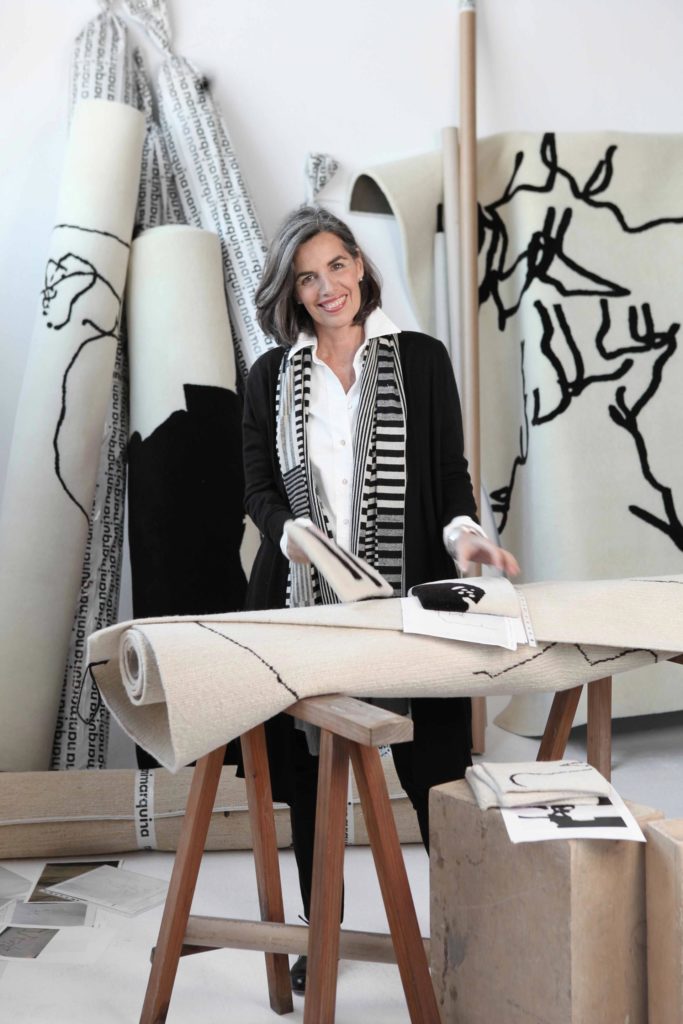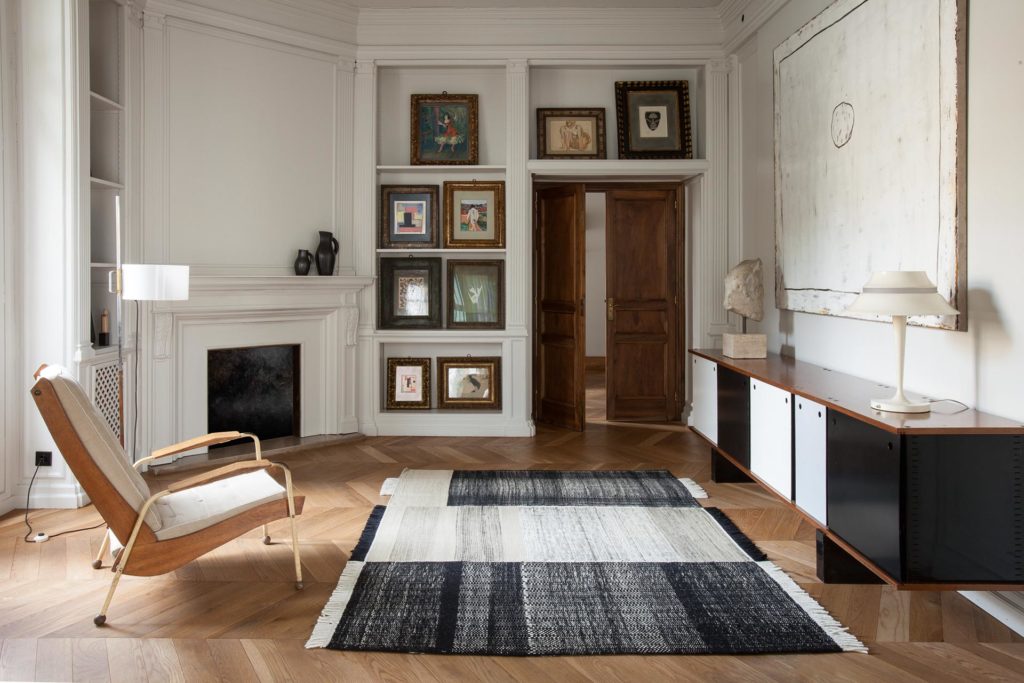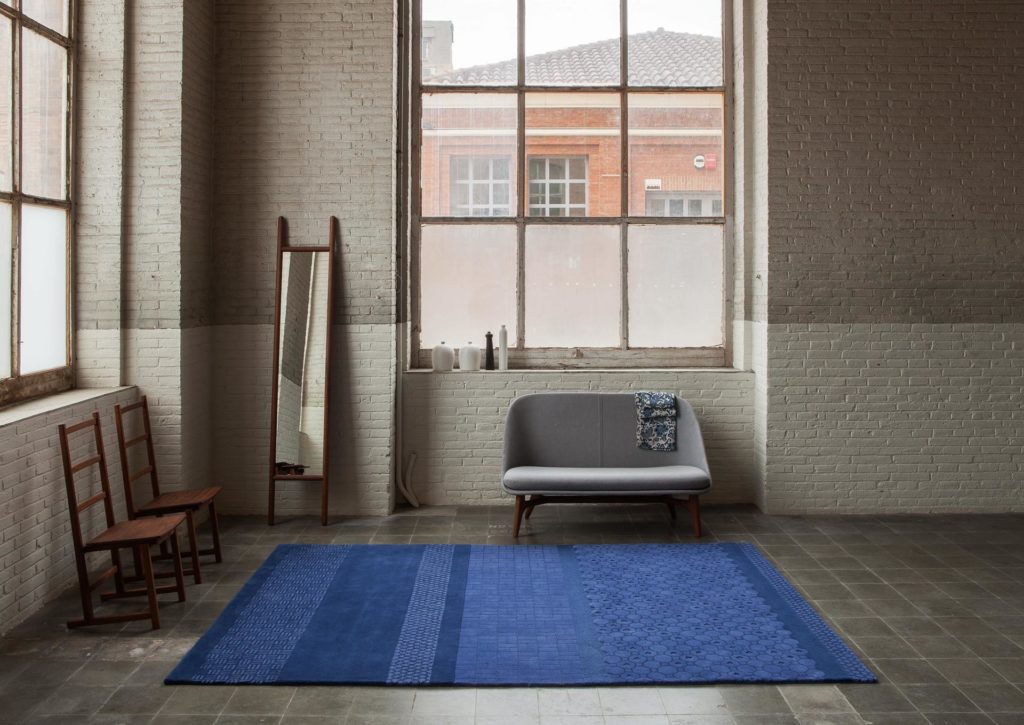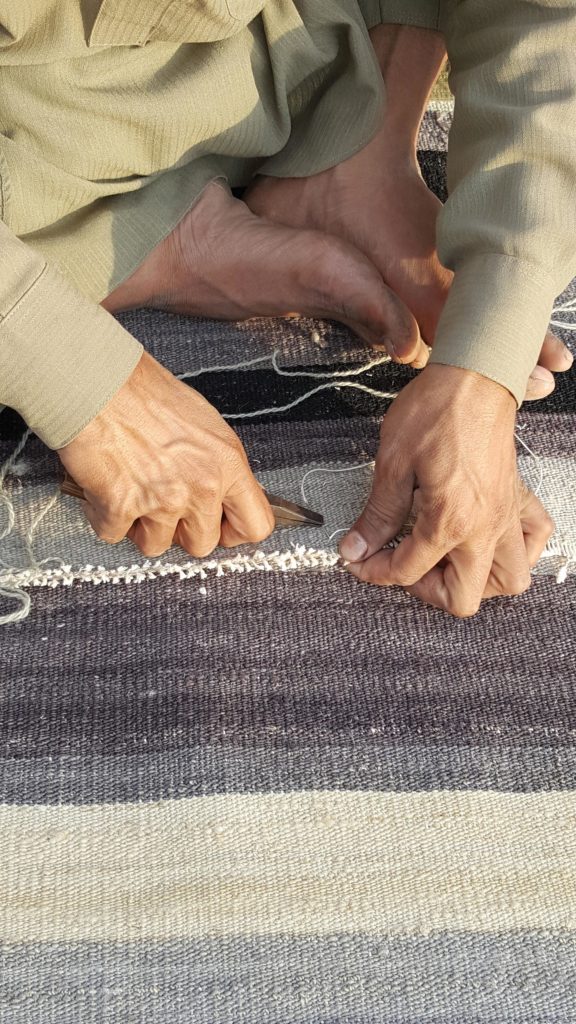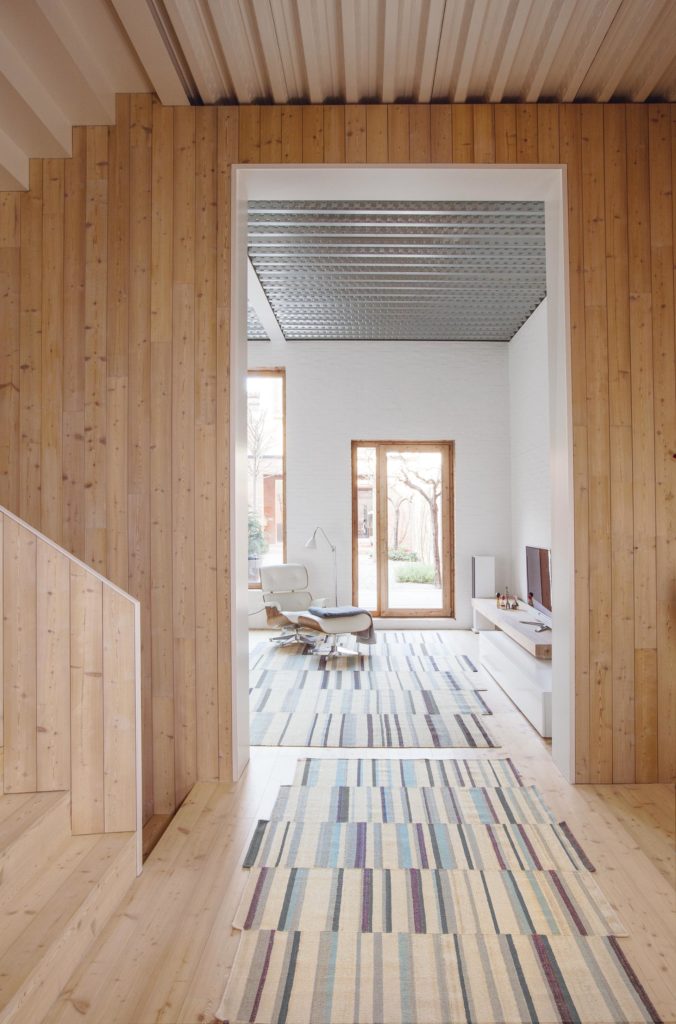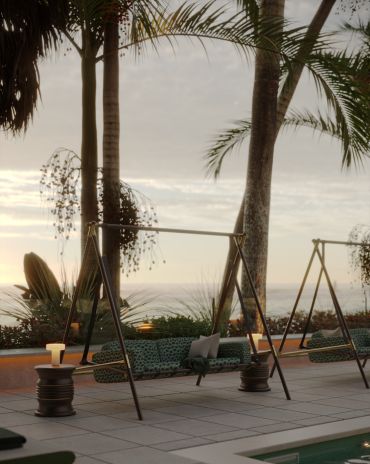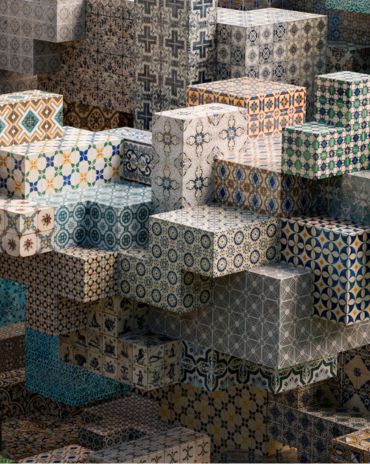Copyright © 2025 Motivate Media Group. All rights reserved.
Nani Marquina reigns supreme
Renowned Spanish designer and entrepreneur tells id how she transformed the industry.
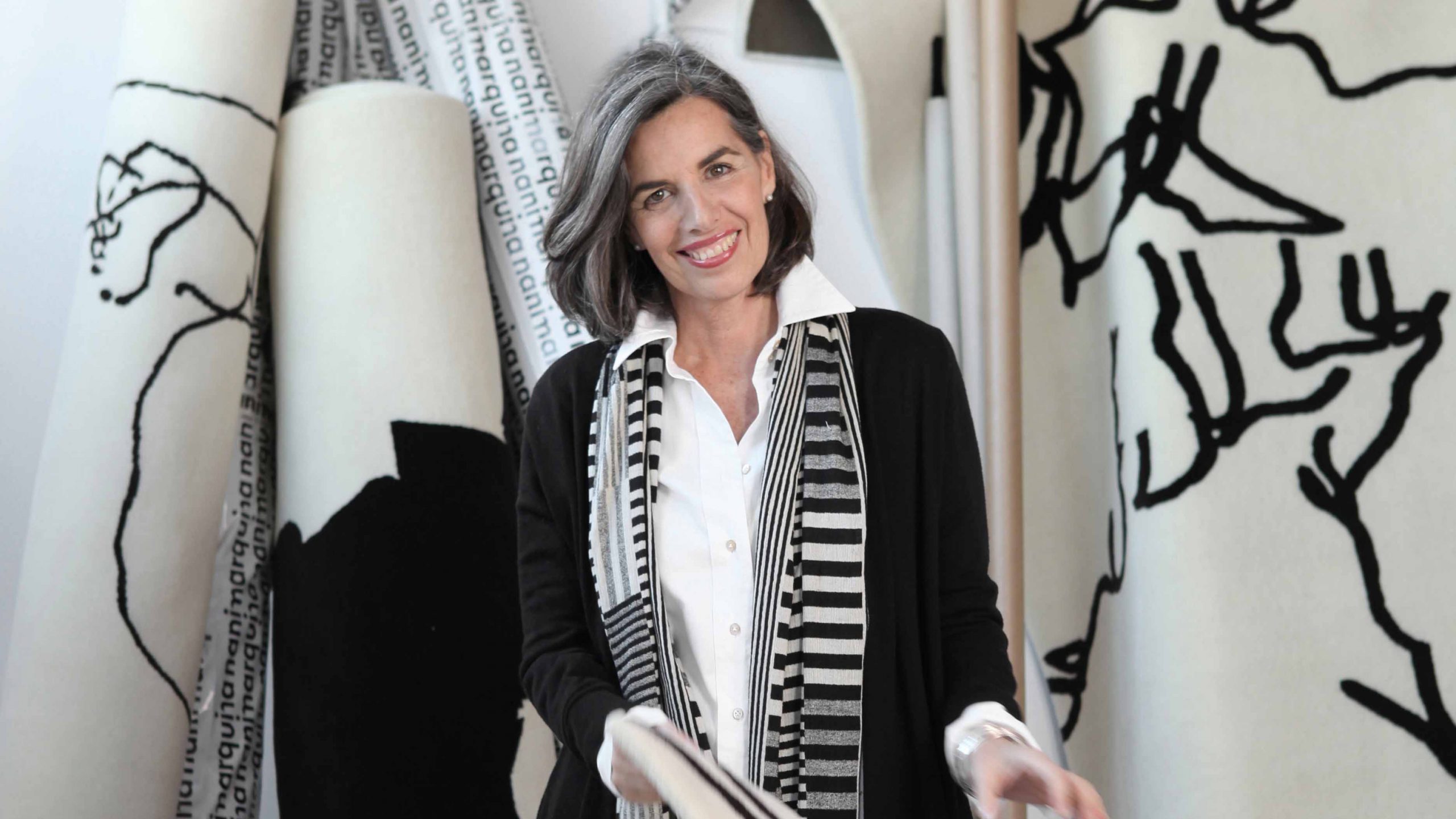
With a smile and embrace as warm and welcoming as her iconic rugs, Nani Marquina is among the most sought-after names in the design industry. Known for her dynamic momentum and unparalleled business savvy, she has just produced her in-house collection, Tres, in collaboration with Ilse Crawford and Olafur Eliasson – and is producing the largest Nanimarquina rug (13 metres in diameter!) for the new Hard Rock Hotel in Tenerife, Spain.
“During the past five years, we have concentrated on editing external designs in collaboration with different creators. This year I am pleased to announce a collection developed in-house: Tres,” explains Marquina.
“I am very happy with the result, especially because we used a technique that was new for us, the dhurrie (flat weave). I am most proud of the creation of a product that embodies our key qualities of good design, attractiveness and quality, all at a reasonable price.”
Her success is due to her triple threat: aesthetic integrity, innovation and business management. “Achieving a very specific balance has been the key to our success!” she says. “However, it has not been easy. I was in charge of all decisive roles. It’s a matter of intuition, being aware and compensating when necessary. We have turned down contract projects when quality was not a priority!!” A model among her colleagues, she has been honoured with her position as president of the FAD (Foment de les Arts i del Disseny) in Barcelona since 2014.
But collaboration is also key. “Initially, I designed all rug models with an internal team – but after a while, I developed an interest in editing the work of other creators. Collaboration brings freshness, inspiration and experimentation, and guarantees the diversity of styles.”
The world-renowned designer is known for her exclusive collaborations with top designers such as Tord Boonjte, Ronan & Erwan Bouroullec, Milton Glaser, Ron Arad and Neri & Hu.
Her interest in partnerships and sense of wonder inform her role as an id jury member alongside fellow design icons Marco Piva, Paolo Pininfarina and Terry Dwan. “Competitions are a good barometer for measuring the situation of design and discovering new talent. In Europe, we have the feeling that the UAE has experienced a boom in construction, but we are sadly lacking more details. Such initiatives help disseminate creative talent, but also help others understand the country’s culture, needs, tastes and, ultimately… your identity!”
The same is true for her thoughts on the international language of design.
“Spanish design is defined by passion, risk, joy and intuition. However, we could possibly talk about a more European style now. This year we have been fortunate to collaborate with Ilse Crawford. She is interested in human aspects: sensory elements that add warmth; experiential items that never lose sight of the practical and comfortable.”
Designed for success
Her path to her success began close to home; Marquina recalls how her legendary father sparked her interest. “My father, Rafael Marquina, was one of the first industrial designers in Spain; he was a pioneer. Every day when he got home with new designs, I was totally captivated, and he passed on his great passion for design.”
In fact, he gave her both the best and worst advice she’s received. “They both came from my father,” she says with a warm smile. “The best: Always seek simplicity. The worst: Devote myself to interior rather than product design!”
This inherited passion led to her nuanced education. “After studying industrial design at the Escola Massana of Barcelona and realising the success of my first made -to-order textile designs, I embarked on the at-the-time unknown career of industrial design.”
Still, her decision to work with rugs wasn’t made overnight. “I started out designing prints for interior décor and I discovered that there was a gap in regards to contemporary rugs. When I started in the ‘80s, no-one was paying attention to rugs, so I was able to starting designing quality rugs with a clear focus.”
And like every top entrepreneur, she used her biggest challenge to create positive change. “We received a technically complex assignment for a contract project. At the time, we were producing our rugs mechanically in Spain; however, this technique limited our creativity. That contract project was crucial, so we embarked on our biggest adventure: visiting India to discover local handcrafting techniques and [gain] knowledge about the culture and symbolism of rugs. This led to new production methods that render each rug unique. After this test, we re-located the production to northern India, where we continue today.”
As a 21st-Century design leader, Marquina also has a profound sense of social responsibility. “We have an obligation to take into account durability, ecology and sustainability. Good design implies products that have a permanent place in your home.”
Her advice for young designers: “Stay informed about the world. Discover what others are doing without letting these factors sway you. Trust your intuition and personal vision by observing the end user.” We can’t wait to discover her next creation.
The Latest
Maison Aimée Opens Its New Flagship Showroom
The Dubai-based design house opens its new showroom at the Kia building in Al Quoz.
Crafting Heritage: David and Nicolas on Abu Dhabi’s Equestrian Spaces
Inside the philosophy, collaboration, and vision behind the Equestrian Library and Saddle Workshop.
Contemporary Sensibilities, Historical Context
Mario Tsai takes us behind the making of his iconic piece – the Pagoda
Nebras Aljoaib Unveils a Passage Between Light and Stone
Between raw stone and responsive light, Riyadh steps into a space shaped by memory and momentum.
Reviving Heritage
Qasr Bin Kadsa in Baljurashi, Al-Baha, Saudi Arabia will be restored and reimagined as a boutique heritage hotel
Alserkal x Design Miami: A Cultural Bridge for Collectible Design
Alserkal and Design Miami announce one of a kind collaboration.
Minotticucine Opens its First Luxury Kitchen Showroom in Dubai
The brand will showcase its novelties at the Purity showroom in Dubai
Where Design Meets Experience
Fady Friberg has created a space that unites more than 70 brands under one roof, fostering community connection while delivering an experience unlike any other
Read ‘The Winner’s Issue’ – Note from the editor
Read the December issue now.
Art Dubai 2026 – What to Expect
The unveils new sections and global collaborations under new Director Dunja Gottweis.
‘One Nation’ Brings Art to Boxpark
A vibrant tribute to Emirati creativity.
In conversation with Karine Obegi and Mauro Nastri
We caught up with Karine Obegi, CEO of OBEGI Home and Mauro Nastri, Global Export Manager of Italian brand Porada, at their collaborative stand in Downtown Design.

